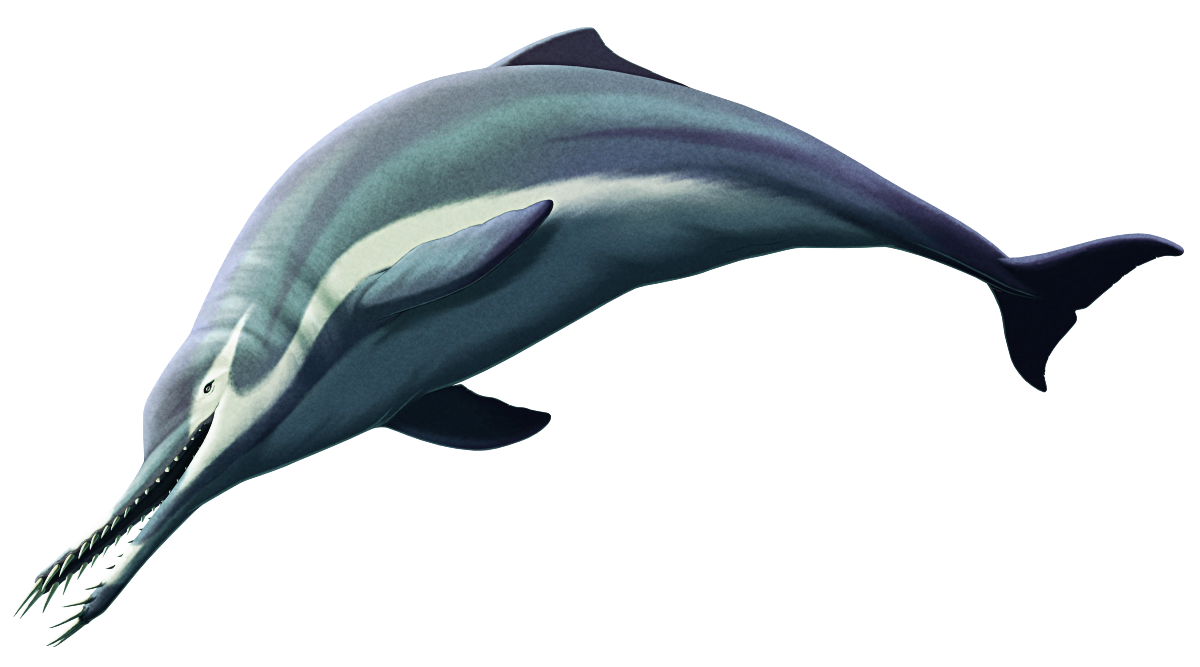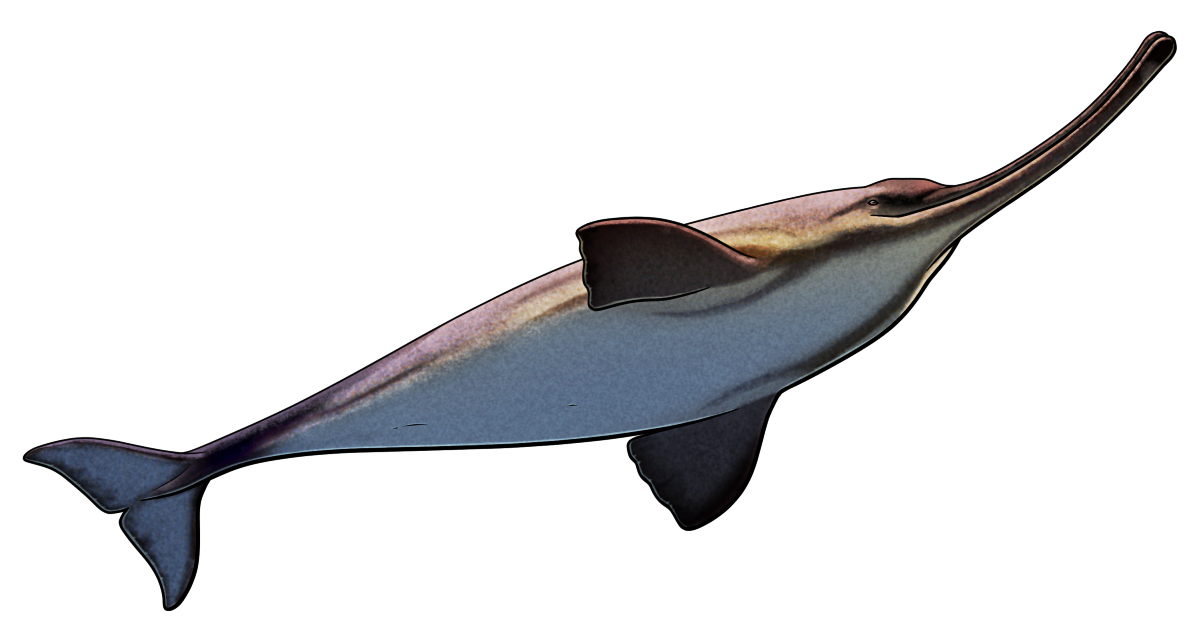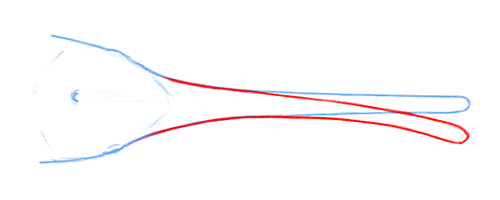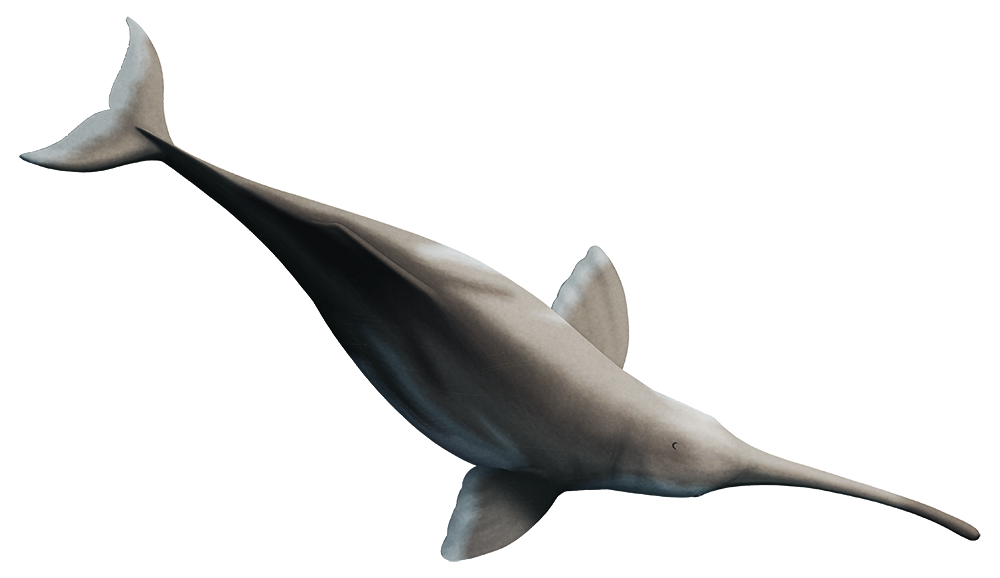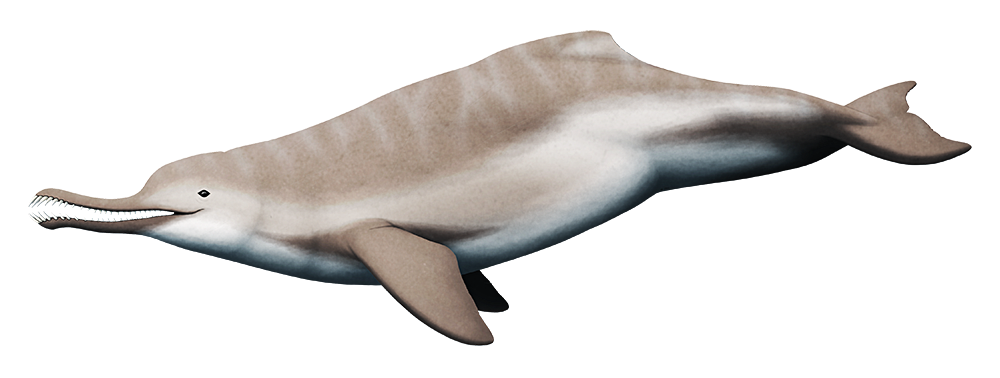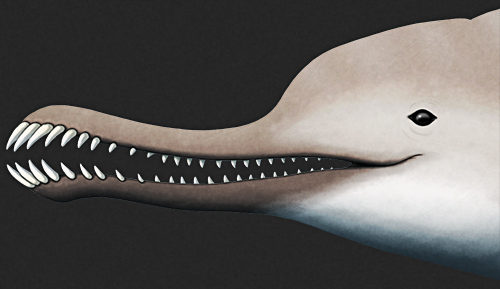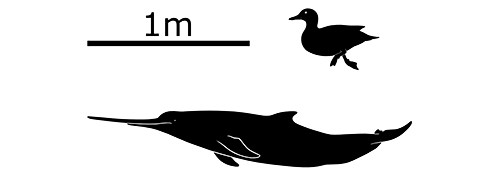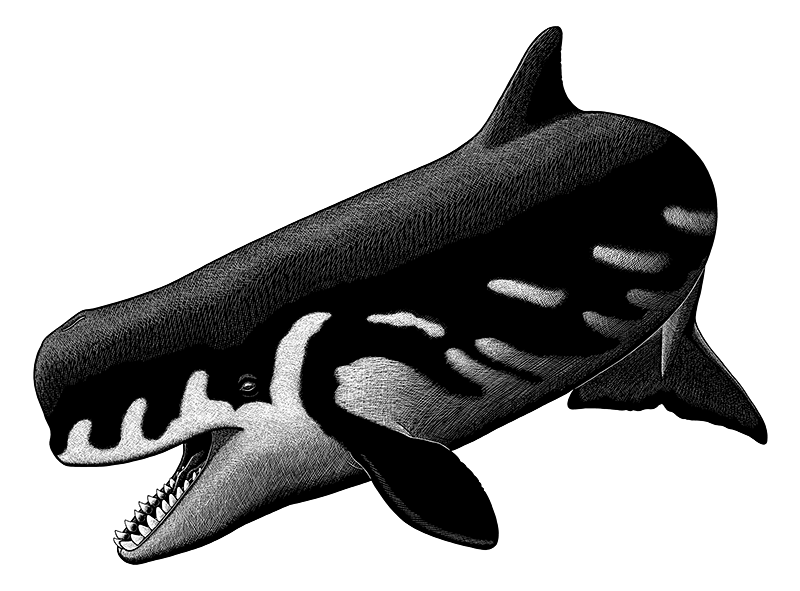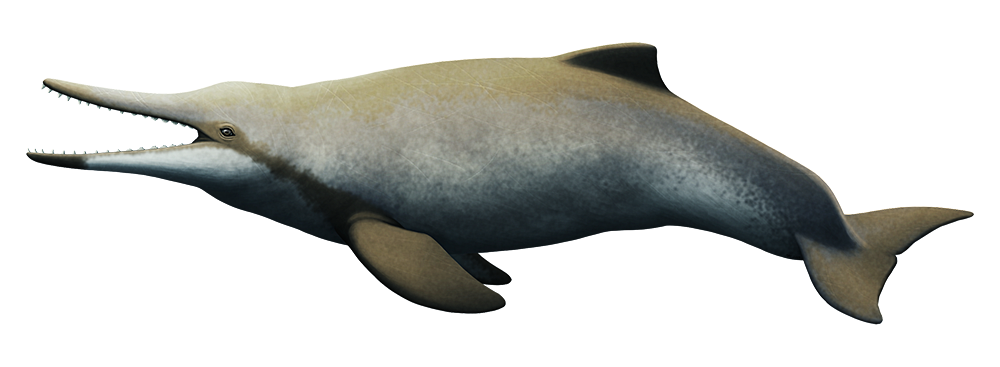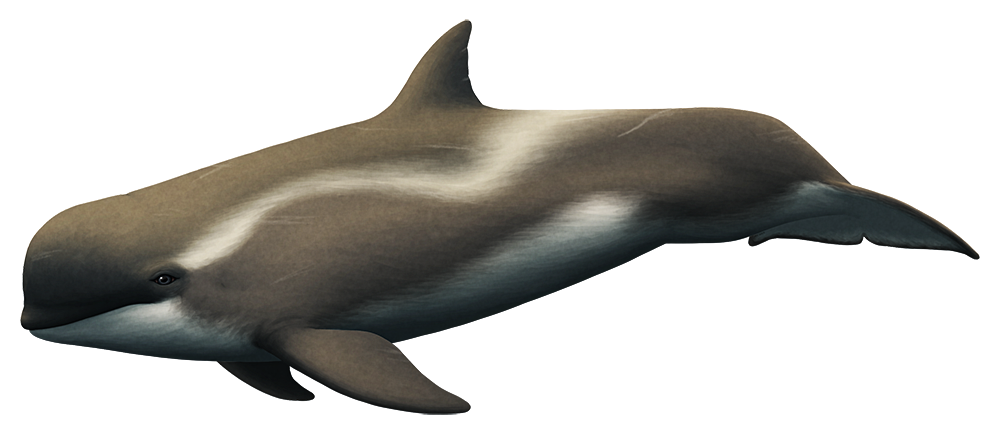Nihohae matakoi was a dolphin that lived in the coastal waters around what is now Aotearoa New Zealand during the late Oligocene, about 25 million years ago. Part of a group known as waipatiids, it was much closer related to modern South Asian river dolphins than to modern oceanic dolphins.
Around 2m long (6’6″), it had unusually long tusk-like teeth at the front of its jaws, splaying out almost horizontally forwards and to the sides.
These teeth lay too flat to effectively interlock as a “fish trap”, and their fairly delicate structure and lack of wear marks suggests they also weren’t used for piercing large prey, sifting through gritty sediment, defending against predators, or for fighting each other. But Nihohae did have a highly flexible neck and the ability to quickly snap its jaws from side to side – although with a relatively weak bite force, suggesting it was primarily tackling small soft-bodied prey that could be easily swallowed whole.
Overall its feeding ecology seems to have been similar to modern sawfish, stunning prey such as squid with rapid slashing swipes of its jaws.

